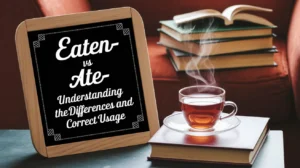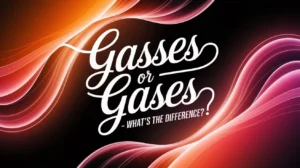Last Updated on April 12, 2025 by Johnny Peter
When we talk about comparing and contrasting, these terms are often used interchangeably. However, they are two distinct concepts, each with its own purpose and method. Understanding the difference between compare and contrast is essential for effective writing and clear communication.
Whether you’re a student preparing for an essay, a writer working on a report, or simply someone trying to explain differences and similarities in everyday life, knowing how to properly use compare and contrast can make a significant impact on the clarity of your message.
In this article, we will explore the definitions, key differences, examples, synonyms, and even the origins of compare and contrast. By the end, you’ll be equipped with the knowledge to use both terms effectively, helping you make better decisions in writing and communication.
What Does “Compare” Mean?
The word compare comes from the Latin comparare, meaning “to pair together.” The act of comparing is all about finding similarities between two or more things. When you compare items, you are looking for aspects that are alike in both, whether it’s characteristics, features, or qualities. It’s the process of looking for common ground.
Purpose of Comparing
The purpose of comparing is to analyze similarities. It could be to help decide between two choices, identify patterns, or simply show that two things are connected in some way. When you compare, you are essentially matching two things to understand them better.
Example of Comparing
Let’s say you’re comparing two movies: Inception and Interstellar.
- Both films are directed by Christopher Nolan.
- Both films explore complex themes like time, space, and reality.
- Both films feature high-stakes adventures involving deep emotional and psychological struggles.
By comparing these movies, you’re finding the elements they share, such as their themes and director, allowing you to appreciate the connection between them.
What Does “Contrast” Mean?
Now, let’s shift our focus to the word contrast. Contrast comes from the Latin contrastare, meaning “to stand against.” When you contrast, you are looking for differences between two or more items. The goal is to highlight what makes them distinct from each other.
Purpose of Contrasting
Contrasting helps you distinguish between things based on their unique characteristics. This is essential in situations where you need to make a choice or identify distinctions that might not be immediately obvious. When you contrast, you are actively emphasizing the divergence in the things you’re examining.
Example of Contrasting
Now, let’s contrast the same two movies:
- Inception focuses on the idea of dream manipulation, whereas Interstellar focuses on space exploration.
- Inception is more grounded in real-world science fiction, while Interstellar explores the concept of relativity and black holes.
- The tone of Inception is thriller-like and psychological, while Interstellar is more emotional and philosophical.
By contrasting these movies, we can better understand the distinctiveness of each film, recognizing that while they both belong to the science fiction genre, their approaches are vastly different.
Compare vs Contrast: Key Differences
While compare and contrast are often used together, they have distinct differences. Let’s break down these differences to understand how each serves a unique role in communication.
Purpose
- Compare: The purpose of comparing is to focus on similarities. When you compare, you are asking, “What do these two things have in common?”
- Contrast: The purpose of contrasting is to highlight differences. When you contrast, you are asking, “How are these two things different?”
Focus
- Compare: When comparing, you focus on similarities. The goal is to look for common ground and connections between the two items.
- Contrast: When contrasting, you focus on differences. The goal is to examine what sets the items apart and why those differences matter.
Method
- Compare: Comparing involves looking at two things side by side and identifying their common features. This could involve examining physical traits, qualities, actions, or other characteristics that they share.
- Contrast: Contrasting involves examining two things and emphasizing their opposing qualities. This could include differences in size, shape, function, purpose, or any other element that makes the two items stand out from one another.
Language Cues
- Compare: When comparing, signal words often include: similarly, likewise, both, in the same way, and equally.
- Contrast: When contrasting, signal words include: however, on the other hand, yet, but, whereas, and in contrast.
Examples in Context
Let’s dive into some real-life examples of comparing and contrasting.
Compare Examples
- Comparing Two Restaurants:
Both Restaurant A and Restaurant B offer vegetarian options, provide outdoor seating, and feature seasonal menus.
- Both restaurants focus on sustainability and use locally sourced ingredients.
- The ambiance at Restaurant A is more casual, while Restaurant B offers a fine dining experience.
- Both restaurants focus on sustainability and use locally sourced ingredients.
- Comparing Two Products:
The iPhone 14 and the Google Pixel 6 are both smartphones.
- Both have high-resolution cameras designed for photography enthusiasts.
- Both phones feature 5G technology and offer advanced biometric security.
- Both have high-resolution cameras designed for photography enthusiasts.
By comparing these examples, you can see that both restaurants and both smartphones share important features that help consumers make informed decisions.
Contrast Examples
- Contrasting Two Movies:
While The Dark Knight is a gritty, psychological thriller focused on real-world themes of crime and morality, Avengers: Endgame is a grandiose, action-packed superhero movie set in a fantastical universe.
- The Dark Knight explores the mental and emotional struggles of its characters, while Avengers: Endgame focuses on team dynamics and the battle between good and evil.
- The Dark Knight explores the mental and emotional struggles of its characters, while Avengers: Endgame focuses on team dynamics and the battle between good and evil.
- Contrasting Two Cities:
New York City is known for its fast-paced lifestyle, concrete jungle, and bustling downtown areas, while Sedona is renowned for its peaceful atmosphere, red rock landscapes, and small-town charm.
In both examples, contrasting helps to define the differences between two distinct items, whether it’s movies, cities, or anything else.
Synonyms of “Compare” and “Contrast”
Both compare and contrast have several synonyms that can be used depending on context.
Synonyms for “Compare”
- Match
- Examine
- Relate
- Correlate
- Juxtapose
- Balance
Synonyms for “Contrast”
- Differentiate
- Distinguish
- Oppose
- Set against
- Separate
- Set apart
Synonyms for both words are useful for varying your language in writing and preventing repetition, but they each bring slightly different nuances depending on the situation.
Origins of the Words “Compare” and “Contrast”
Understanding the origins of words can give us deeper insights into their meanings and usage.
Origins of the Word “Compare”
The word compare comes from the Latin comparare, which means “to pair together.” This word evolved over centuries, retaining the essence of pairing things for the purpose of examining their similarities.
The concept of comparison is tied to matching and aligning features to understand their commonalities.
Origins of the Word “Contrast”
On the other hand, contrast comes from the Latin contrastare, meaning “to stand against.” This reflects the core idea of opposition or differentiation. Over time, contrast has become synonymous with showing differences, whether between objects, ideas, or experiences.
Conclusion
In conclusion, while compare and contrast are often used together, they serve distinct roles. Comparing focuses on finding the similarities between things, while contrasting is about identifying and emphasizing the differences.
Understanding these differences can improve your writing, critical thinking, and communication, helping you analyze ideas and make better decisions.
Knowing when and how to use compare and contrast effectively will give you the power to communicate with greater precision and clarity, whether you’re writing an essay, making a decision, or simply discussing an idea with others.
Frequently Asked Questions (FAQs)
Is contrast the opposite of compare?
No, contrast focuses on differences, while compare focuses on similarities. Both are important but address different aspects of comparison.
Can you compare and contrast at the same time?
Yes, often in academic writing and analysis, you will compare and contrast simultaneously, pointing out both the similarities and differences.
What’s a compare and contrast essay?
A compare and contrast essay is a common type of writing assignment in which the writer examines two or more subjects, highlighting their similarities and differences.
Why are these skills important?
Compare and contrast are critical for critical thinking, decision-making, and understanding complex issues, making them essential tools for communication.













